|
Nycticorax nycticorax
(Blackcrowned
night heron)
Gewone nagreier [Afrikaans]; uSiba [Zulu]; Hakaruu
gomasiku [Kwangali]; Kokolofitoe (generic term for heron) [South Sotho];
Kwak [Dutch]; Bihoreau gris [French]; Nachtreiher [German];
Garça-nocturna [Portuguese]
Life
> Eukaryotes >
Opisthokonta
> Metazoa (animals) >
Bilateria >
Deuterostomia > Chordata >
Craniata > Vertebrata (vertebrates) > Gnathostomata (jawed
vertebrates) > Teleostomi (teleost fish) > Osteichthyes (bony fish) > Class:
Sarcopterygii (lobe-finned
fish) > Stegocephalia (terrestrial
vertebrates) > Tetrapoda
(four-legged vertebrates) > Reptiliomorpha > Amniota >
Reptilia (reptiles) >
Romeriida > Diapsida > Archosauromorpha > Archosauria >
Dinosauria
(dinosaurs) > Saurischia > Theropoda (bipedal predatory dinosaurs) >
Coelurosauria > Maniraptora > Aves
(birds) > Order: Ciconiiformes
> Family: Ardeidae
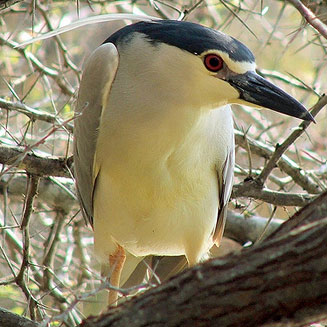 |
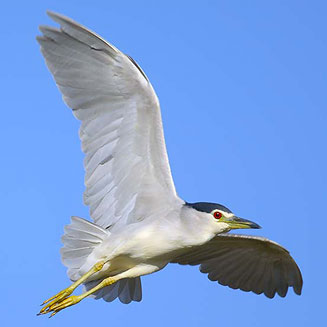 |
| Black-crowned night-heron. [photo
Tony Faria
©] |
Black-crowned night-heron. [photo Sion Stanton ©] |
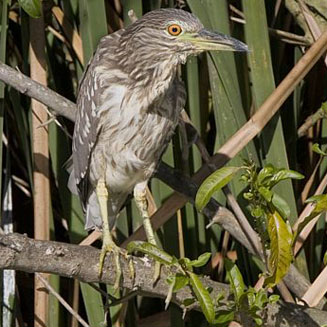 |
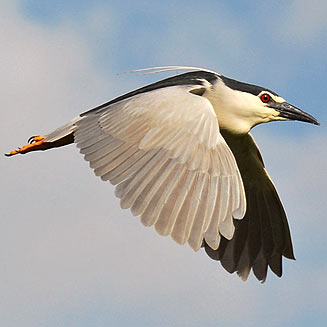 |
| Black-crowned night-heron juvenile,
Milnerton Sewage Works, South Africa. [photo Callie de Wet ©] |
Black-crowned night-heron. [photo Callie de Wet ©] |
Distribution and habitat
Occurs from Japan and South-East Asia to Europe south to
Madagascar and sub-Saharan Africa, largely absent from the DRC and Angola. In
southern Africa, it is common in central and southern Mozambique,
Zimbabwe, much of South Africa (excluding the arid Karoo and Kalahari), northern
and eastern Botswana and patches of Namibia, including the Caprivi Strip. It
generally prefers slow-moving water bodies with plenty of emergent vegetation,
such as estuaries, swamps, marshes, lakes, mangroves, rivers, dams and sewage
ponds.
|
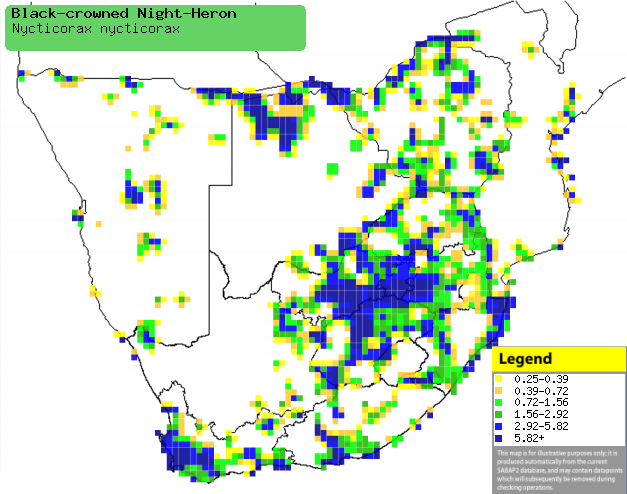 |
|
Distribution of Black-crowned night-heron in southern Africa,
based on statistical smoothing of the records from first SA Bird Atlas
Project (©
Animal Demography unit, University of
Cape Town; smoothing by Birgit Erni and Francesca Little). Colours range
from dark blue (most common) through to yellow (least common).
See here for the latest distribution
from the SABAP2. |
Predators and parasites
- Predators
- of adults
- of chicks and eggs
Movements and migrations
Nomadic, as it makes local movements in
response to rainfall.
Food
It eats fish and a variety of other animals, foraging at
dusk and night to prevent competition with other herons. It mainly hunts by
either waiting on a perch or on the shoreline, catching anything that comes to
close, or by wading through the water and stabbing prey. The following food items have been recorded
in its diet:
- Vertebrates
- fish
- amphibians
- reptiles
- birds
- small mammals
- Invertebrates
Breeding
- Monogamous colonial nester, breeding in groups of 10-1000 nests
along with other water birds, with each male establishing a territory around
a platform on which it displays to females.
- The nest is built by the female with material provided by the male,
consisting of a platform of sticks and reeds, typically placed in a reedbed
or more rarely a flooded bush or tree, or even on a cliff overhanging a river.
- Egg-laying season is year-round, mainly peaking during the rain season,
such as December-January in Zimbabwe and September-October in the Western
Cape.
- It lays 2-4 eggs, which are incubated by both sexes for about 22-26
days.
- The chicks are fed by both parents, first leaving the nest for the
surrounding vegetation after about 20-25 days. They only fledge when they
are 40-50 days old.
Threats
Not threatened, in fact its southern African population is increasing
in size.
References
-
Hockey PAR, Dean WRJ and Ryan PG 2005. Roberts
- Birds of southern Africa, VIIth ed. The Trustees of the John Voelcker
Bird Book Fund, Cape Town.
|
